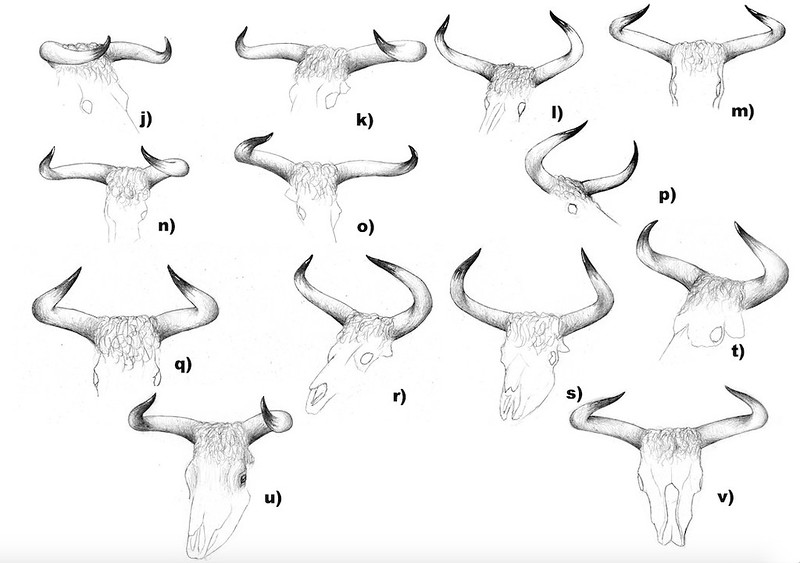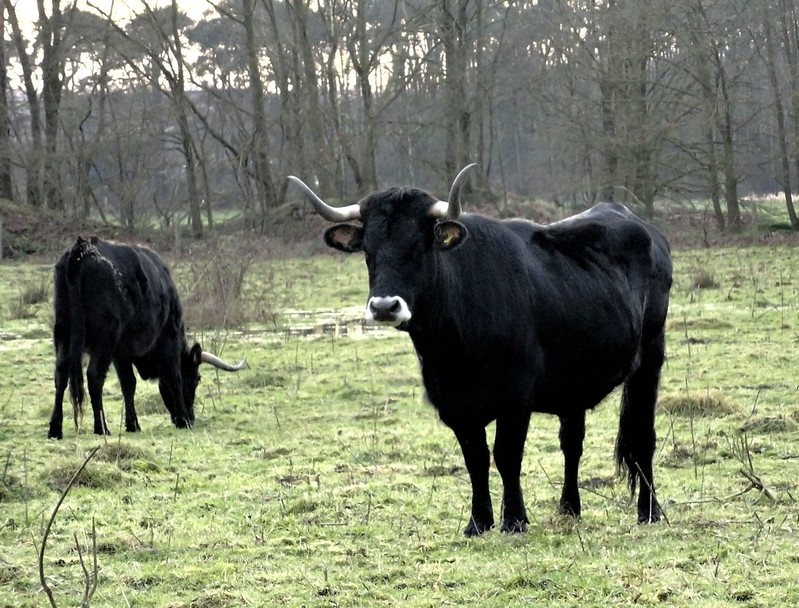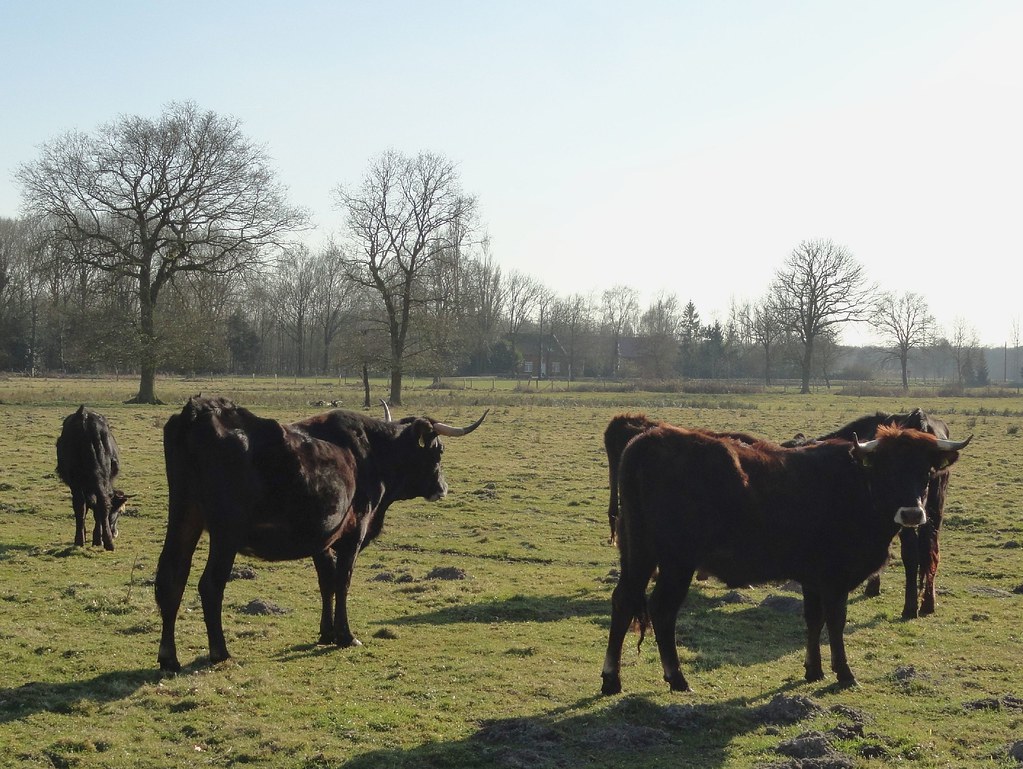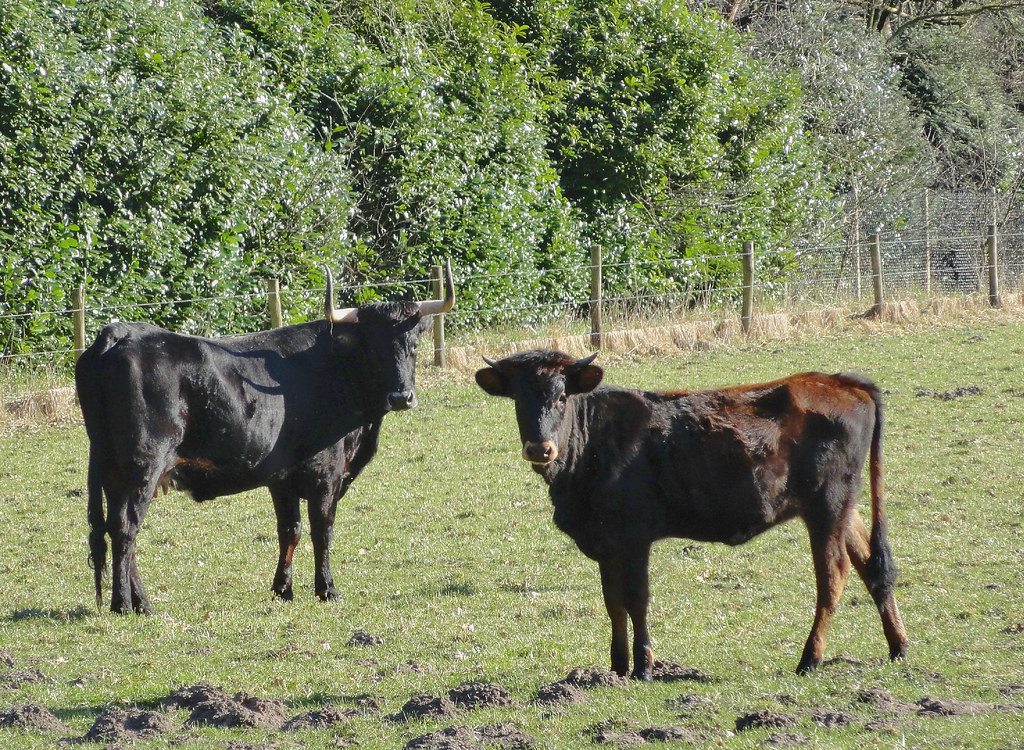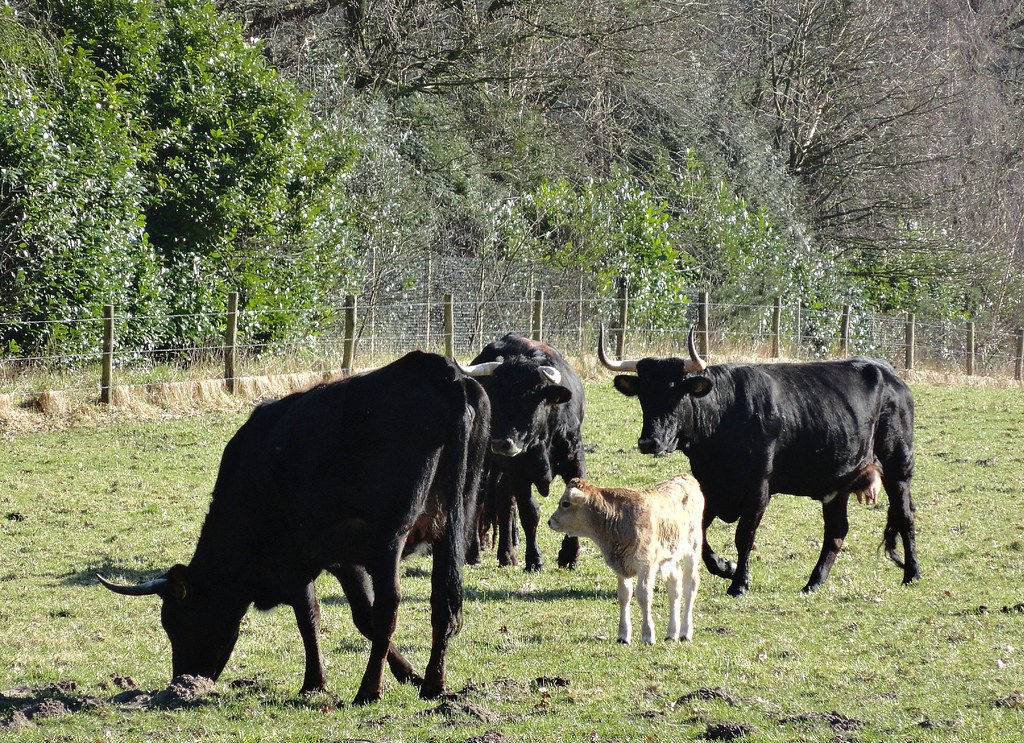Mammoth DNA made it into the news again. Until recently, the genome of Mammuthus primigenius was not completely resolved yet, but now it is - not only of one individual, but actually two. These two individuals, both males and from Siberia, lived about 40.000 years apart from each other. The older one is from approx. 44,800 years ago, late Pleistocene, and the other one 4,300 years ago. The younger one lived on Wrangel Island, the last refuge of the Woolly Mammoth, back the time when the ancient Egyptians built their pyramids (which is a fascinating thought to me).
The study, published by Palkopoulou et al.[1] in Current Biology, revealed interesting but not surprising facts. The population of the Eurasian woolly mammoth went through a considerable bottleneck during the middle Pleistocene, which is consistent with the fact that their habitat had shrunken dramatically back this time due to the interglacial climate [2]. The same happened at the early Holocene of course, but still mammoths survived into the antiquary. The last refugee population on Wrangel had a rather small genetic diversity, and likely also suffered from an inbreeding depression, which is confirmed by this study. Undoubtedly it was a mix of several factors that drove the last mammoths to extinction, but I think it is likely that man played a considerable role in it. In my opinion, perhaps not the vulnerable Wrangel population but at least the core population in the North Siberian tundra might have survived without any human hunting pressure.
[1] Palkopoulou et al.: "Complete genomes reveal signatures of demographic declines in the Woolly Mammoth", Current Biology 2015.
[2] Nogues-Bravo et al.: "Climate change, humans, and the extinction of the Woolly Mammoth", PLOS Biology, 2008.
"Breeding-back" aims to restore or immitate extinct animals by selective breeding. This blog provides general information, the facts behind myths and news from various projects.

Saturday, 25 April 2015
Using extant wild cattle to create an aurochs replica?
I have been
asked by several people if crossbreeding with existing, extant wild cattle is a
good idea for creating a bovine that resembles the aurochs and is suited to
live in Europe’s wilderness. I have been wondering that myself already, and
indeed it is tempting. As so many aspects in “breeding-back”, rewilding or
“de-extinction”, this question is subjective. But I am going to try to list
some of the pro’s and con’s and draw my personal conclusion.
The
thoughts behind this idea are that domestic cattle have lost certain wild
animal traits, what they undoubtedly did, and that wild bovines could bring
them in, otherwise the cattle would have to redevelop them by dedomestication. And
apart from that, they would be able to contribute morphological and external
traits resembling the aurochs at least as good as primitive domestic cattle could,
or even better. For example, Java banteng have a strong, well-marked sexual
dimorphism and the tone of their coat colour is reminiscent to that of the
aurochs (light brown in cows, black in bulls). Gaurs have an impressive size,
bigger than any living cattle. Some wild yaks have horns that perfectly resemblethose of the aurochs, and they would contribute excellent cold tolerance. Yaks
are closer to bison than cattle, and the males of the first generation have
fertility problems. But that would disappear as the breeding progresses. The
wisent would contribute aurochs-like proportions with a well-pronounced hump,
but there are even more pre- and postzygotic isolation mechanisms, and wisent
and aurochs were sympatric, so I would not use them. Actually, all of those
wild bovines would add high processus spinosi in the shoulder area. The
undesired traits they contribute, such as the overlong coat of the yak, the
upright horns or white “socks” of banteng and gaur would be selected out just
as any other undesired trait.
So using
those wild bovines seems advantageous for optic traits and probably also cold
resistance. But there are other aspects that must be considered. First of all,
they are not just different varieties of one and the same species, but
completely different species. They diverged more than two million years ago
(the age of the oldest aurochs remains), so there are considerable differences
not only in morphology but also genetics and ecology. The argumentation that an
aurochs replica made by “breeding back” would be ecologically equivalent to the
aurochs because domestic cattle are a domesticated variation of this species
would be gone, and it is likely that the other species differ ecologically from
the aurochs. The gaur for example was sympatric with the aurochs and prefers
dense forest, live on higher altitudes and browse more than cattle. This
distinguishes it from the aurochs in the same way as the wisent. The banteng on
the other hand, whose range did not overlap with the aurochs but with the gaur,
dwells in dryer and open landscapes and is therefore comparable to the aurochs.
Yaks definitely are grazers. According to Wikipedia, they need less food intake
than robust cattle and survive a couple of days without water and food, and
they cope with way colder temperatures than cattle usually do.
While I
don’t know of fertility problems between the closely related Bos members gaur, banteng and aurochs,
cattle and yak do have some as stated above. Yak are closer to bison, which
might be problematic – it could increase the chance of hybrid cattle interbreeding
with wisents. But this is just an assumption, I do not know if yak and bison
readily interbreed at all.
From the
ecological point of view, yak and banteng shouldn’t be that problematic. The
yak would probably even be beneficial. Morphologically/optically, they would be
advantageous as well: banteng contribute size, high shoulder spines and a
well-marked sexual dimorphism, and (wild) yaks add perfectly aurochs-like
horns. So why not using them, at least in small doses?
There are
people who are opposed to the usage of breeds with visible zebuine influence
(like Watussi) because zebuine and taurine cattle diverged in the late
Pleistocene, but still are B. primigenius,
so they would totally reject the usage of extant wild bovines in the first
place. The argument that dedomesticated, aurochs-like cattle have a legitimation
as native wild animals in Europe because they belong to the same species as the
aurochs would lose its credibility since such a population would consist of
hybrids, at least to a certain degree. This would be problematic for their
academic and public acceptance. Considering the controversies around releasing
endangered animals even with subtle introgression of another subspecies,
I would be surprised if the majority, or even a third, of serious scientists
would be in favour of releasing a population consisting of domestic stand-ins
for an extinct species mixed with species that are certainly not native – which
is understandable. And I can imagine headlines in crappy tabloids like “Hybrid
monster cattle to be released into nature!”. Of course I am aware that
hybridization is a part of evolution and takes place anywhere closely related
species neighbour each other, and regular readers of my blog will know that I
am not averse against bison introgression into controlled wisent herds as
diversity donors. But primarily I think that man should try to conserve or
reconstruct nature as it is or was, and not to try playing evolution if not
necessary. Regardless of how strong the hybrid influence would be, the
population will probably display a mosaic of not only morphology but also
ecology and behaviour. I have not mentioned yet that yaks also live on higher
altitudes than cattle, and banteng have a different combat behaviour. They have
a higher profile and display it to their opponent, raising their head to look as
large as possible. They do not fight nearly as often as cattle do, what
explains their upright horn shape. Who knows what kind of effect it will have
on the behaviour of the population.
So there
are arguments for and against using wild cattle to breed an aurochs substitute.
My personal opinion is that I probably would not do it, because of the
scientific and public response and a weaker argumentation basis as outlined
above. Nevertheless it would be interesting to see hybrids between Yak, Banteng
and primitive cattle. A “test herd” could be an idea.
Monday, 6 April 2015
Two new nice videos of Taurus cattle from the Lippeaue
The Lippeaue, which is the centre of Taurus cattle breeding in Germany probably has the best animals of this breed. I covered them in a lot of other posts already (see here, for example).
Now, a worker of the ABU has published some more videos of their cattle and I hope you enjoy them.
This video shows a small group of cows and their offspring crossing a stream. They are just as elegant as good Limia or Pajuna, their colour is alright and also the head shape. I really like what I see. Just the horns should be better, perhaps this is going to change when the genes of the recently purchased Wörth cow will be spread through the population. The grey one is, of course, a pure Chianina.
This cow is 65% Chianina and one of their largest animals - I think her size is really impressing, and also her horns - albeit small - grew well.
That's a (Heck x Chianina) x Sayaguesa bull. Although its body shape could be better, he looks elegant and its size seems to be good as well.
I am looking forward to visit this herd again. Those Taurus cattle do the best job in improving the whole Heck cattle population in Germany.
Now, a worker of the ABU has published some more videos of their cattle and I hope you enjoy them.
I am looking forward to visit this herd again. Those Taurus cattle do the best job in improving the whole Heck cattle population in Germany.
It's horn time!
Horns are
probably the most wonderful body part of a bovine. Each species has
characteristic horns, and so had the aurochs. An aurochs look-alike would not
be complete if its horns would not resemble their wild ancestors. In order to
breed cattle with authentic aurochs-like horns, one has to know what they
looked like*. This is not problematic, since there are dozens of well-preserved
aurochs skulls with complete or nearly complete horns. But beware that bony
horn cores actually do not represent the actual size and shape of the horn
because the keratinous sheath is missing. That’s why I did a lot of sketches
done by tracking out the original skulls and adding the keratinous sheath. The
sheath continues the spiral-like curve of the bony core and adds about 8% in diameter
and 10-20% in length. Recently I did 22 reconstructions of aurochs horns based on
photos of skull material that I am going to present here.
* For a
detailed description of what the horns of this species were like, go here.
a) Location
and age unknown to me. Rather wide-ranging and large – Pleistocene?
b) Italy,
Pleistocene. Massive horn cores and skull, definitely male.
c) Britain,
age unknown to me.
d) Germany,
age unknown to me.
e) Germany,
age unknown to me.
f) Location
and age unknown to me. Likely male.
g) Germany,
Pleistocene. Really wide-ranging horns.
h) Britain,
Holocene. Likely a cow.
i) Italy,
Pleistocene. Slightly asymmetric. Very likely a cow.
j) Denmark,
early Holocene (Preljerup). Decent inwards-curve. Definitely a bull.
k) Italy,
Pleistocene. Wide-ranging but well-pronounced curve. Likely a male.
l) Austria,
Bronze Age. Wide-ranging. Likely a cow.
m) Germany,
perhaps Holocene.
n) Britain,
Pleistocene. Large specimen with impressive horns. Definitely a male.
o) Denmark,
early Holocene. Wide-ranging, long-snouted à male.
p) Location
unknown to me but perhaps Britain, age unknown to me. Wide-ranging, probably a
cow.
q) Germany,
age unknown to me. Well-pronounced curvature. Probably a bull.
r) Denmark,
perhaps early Holocene. Rather upright and large horns, long skull. Likely a
bull.
s) Denmark,
early Holocene (Vig). Rather upright and weakly curved, long rostrum. Likely a
bull.
t) Location
and age unknown to me. Rather thick cores. Male.
u) Poland,
age unknown to me. Long snout and small orbital openings à male.
v) Poland,
age unknown to me.
It’s
interesting to see the amount of variability regarding horn shapes regarding
orientation relative to the skull, size and how far they curve outwards.
According to Cis van Vuure, the orientation of the horn varies from 50° to 70°
degrees, but using a photo I measured that the horns of the Vig bulls have an
angle of about 80°, and that other bull from Denmark with the upright horns had
probably an even higher angle. But the basic curvature itself is always the
same (see the post linked above). In the sample presented in my drawings you
won’t find a pair of horns that is even remotely lyre-shaped or facing straight
outwards, or any other deviant shape.
I have been
wondering why the horns of the aurochs were that variable. When you look at the
horns of other wild bovines, they are rather stable. OK, the horn sample we
have covers a large geological and geographical scale. But there is no clear
gradient, neither in time or location, so the variability is found within the same population (one
exception: I noticed that southern aurochs had a smaller angle between horns
and snout than northern ones, with those Danish bulls on the one and the oldestAfrican aurochs skull at the other extreme. I assume that this is likely a
result of genetic drift.)
One
explanation could be that the selective pressure on one particular horn type was
not that large as in other bovines, but that argument is not very strong
because the horns of the aurochs were in more active, functional use than those
of gaurs or banteng for example. Another explanation is that the population of
the aurochs increased very rapidly as it spread over Europe and went through
only through little genetic bottlenecks. But this idea does not satisfy me
completely as well.
When you
look at the horns as they are illustrated above, you might notice that some of
them match very well with those of some modern day cattle. A lot of those horns
resemble those of some Watussi and Heck cattle of the Wörth and Neanderthal
lineage. Others also resemble those of a number of Highlands, Barrosa and also
Texas longhorn. And of course, there are those with the “Iberian” type of horns
as well.
Friday, 3 April 2015
The Tauros cattle at Siendonk & Vosseven
Geer vanne Smeed from weertnatuur.blogspot.com has allowed me to post some of his recent photos of Tauros cattle at Siendonk and Vosseven, Netherlands. I am going to share them with you and try to figure out the identity of the animals shown. All the photos shown here are copyright of G. v. Smeed and used with permission.
Luueke/Vosseven:
This photo is from Janurary andeither shows a Sayaguesa (UPDATE: There are no pure Sayaguesa in that herd.) or a Sayaguesa x Tudanca cow. That herd was covered by a Limia bull, what means that the young cow at the left of the photo below is a (Sayaguesa x Tudanca) x Limia cow:
And has it seems, the Limia bull has now been removed and replaced by the young Maronesa bull from Keent:
That bull looks a lot better than the one from Loozerheide. The proportions of this bull are going to change for several years, but it appears that it relationship between leg length and trunk length will be alright. If that bull is able to mate this year already (which I assume), we will see the birth of (Sayaguesa x Tudanca) x Maronesa and perhaps also ((Sayaguesa x Tudanca) x Limia) Maronesa next year already.
Siendonk:
The herd has been covered by a Maremmana and Pajuna bull since 2013 and consited/consists of Sayaguesa, Maremmana, one Tudanca and several Limia cows. Since the ancestry (not even maternal) is not being documented, we can only guess on the identity of the crossbred animals, which is frustrating. Some of the offspring might also be purebred, what makes it even more ambiguous.
The young cow at the uppermost photo could be anything: Pajuna x Sayaguesa, Pajuna x Limia, Pajuna x Maremmana, Maremmana x Sayaguesa are likely candidates in my opinion. The cow at the left should be a pure Sayaguesa. The second from above shows a Sayaguesa as well. The next two photos show pure Limia cows, one adult cow which's identity I cannot tell (front), a young Maremmana bull that might be the son of the former one, another subadult bull that I go into later, and another young bull that is between the cow at the front and the Maremmana. There is a grey calf as well (surely a Maremmana descendant, perhaps pure or half Tudanca), which is also seen at the lower most photo together with one of those two mysterious bulls. The way I see it, those two subadult bulls might either be pure Sayaguesa, or any combination between Sayaguesa, Limia and Pajuna.
As you see, these are all just guesses and I might also be wrong on a couple of things, because the information the managers give (and have!) is simply too sparse.
Thanks to Gerard for taking all these good and informative photos and allowing me to share them here!
Luueke/Vosseven:
This photo is from Janurary and
And has it seems, the Limia bull has now been removed and replaced by the young Maronesa bull from Keent:
That bull looks a lot better than the one from Loozerheide. The proportions of this bull are going to change for several years, but it appears that it relationship between leg length and trunk length will be alright. If that bull is able to mate this year already (which I assume), we will see the birth of (Sayaguesa x Tudanca) x Maronesa and perhaps also ((Sayaguesa x Tudanca) x Limia) Maronesa next year already.
Siendonk:
The herd has been covered by a Maremmana and Pajuna bull since 2013 and consited/consists of Sayaguesa, Maremmana, one Tudanca and several Limia cows. Since the ancestry (not even maternal) is not being documented, we can only guess on the identity of the crossbred animals, which is frustrating. Some of the offspring might also be purebred, what makes it even more ambiguous.
The young cow at the uppermost photo could be anything: Pajuna x Sayaguesa, Pajuna x Limia, Pajuna x Maremmana, Maremmana x Sayaguesa are likely candidates in my opinion. The cow at the left should be a pure Sayaguesa. The second from above shows a Sayaguesa as well. The next two photos show pure Limia cows, one adult cow which's identity I cannot tell (front), a young Maremmana bull that might be the son of the former one, another subadult bull that I go into later, and another young bull that is between the cow at the front and the Maremmana. There is a grey calf as well (surely a Maremmana descendant, perhaps pure or half Tudanca), which is also seen at the lower most photo together with one of those two mysterious bulls. The way I see it, those two subadult bulls might either be pure Sayaguesa, or any combination between Sayaguesa, Limia and Pajuna.
As you see, these are all just guesses and I might also be wrong on a couple of things, because the information the managers give (and have!) is simply too sparse.
Thanks to Gerard for taking all these good and informative photos and allowing me to share them here!
Wednesday, 1 April 2015
Living near-aurochs relicts found in Poland?
It’s not
uncommon that web or field research unearths some surprisingly aurochs-like or,
in terms of dedomestication, spectacular breeds. But these news struck me the
most. Hold on your horns.
It seems that
aurochs enthusiasts involved in some rewilding projects have, looking for
primitive landraces in Poland, discovered a really remarkable population of
cattle. Farmer Julius Woźniak from Łódź is the owner
of a herd of about 20 cattle that show significant similarity to the aurochs:
they are comparably large (bulls reach about 165cm at the shoulders, so they
are about the size of Sayaguesa or a little larger), the horns are nearly
completely aurochs-like just slightly thinner and rarely some deviant shapes
show up, and the colour is perfectly aurochs-like – bulls are black with an eel
stripe, light muzzle ring and dark, prominent forelocks. Cows are of a
reddish-brown colour with darker shades just like in some Maronesa and Heck
cows. Occasionally there are black cows, just like Anton Schneeberger reported
in the 16th century. Deviant colours do not appear – only some
calves show an ashy grey tone that disappears later on. Those cattle are kept in
a very traditional manner – they wander around freely all the year round, where
they thrive in clear forests and sometimes also visit the mountains. Only when
the owner wants to seize them, he goes into the forest and looks for them with a
his dogs and gathers them together. He only uses their meat and coat, he never
milked one of them. “They almost give no milk. And I would never try to milk
one of those cows. They are nasty beasts”, Wozniak says. In some rural regions
of Poland there are still wolf packs that regularly kill farm animals, and it
also happens that some calves get poached by the wolves, but it is said that
the cows show a great will to defend their calves and surround them in circles
when they are in danger. Adult animals do not have to fear them. Wozniak once
witnessed such a wolf attack “I saw two or three wolves teasing one of my adult
bulls. He tossed one of them into the air about four or five metres wide. Then
the wolves were gone”. The remark that he has more than one adult bull is
interesting – perhaps there is mating competition between the bulls, and
therefore some form of natural selection.
This kind immediately caught the attention of the researchers. Wozniak
allowed them to take hair samples from one young bull that was about to be
slaughtered, and they delivered it to a lab at the University of Warsaw, under
the guidance of a certain Prof. Rubenstein.
The lab is going to test and compare the samples to “other Polish rural cattle,
milk and beef cattle, one Iberian breed [I don’t know which one] and Heck
cattle [I wonder for which purpose…]”. Rubenstein says: “If it turns out that
these bull has any phylogenetic markers, be it mitochondrial, Y chromosomal or
whatever, that are not present in any other European cattle, it would be a
strong hint that the cattle of Mr. Wozniak are of a unique and ancient origin.
We also want to do a molecular clock analysis to get some clue when this breed
diverged from other cattle”. I hope that this sample is representative enough.
A priori, I rule out that these cattle are the result of local domestication.
But, considering that Poland, as most of my readers will know, was the latest
refuge of the aurochs, it may be that these cattle are the result of massive
late introgression of the aurochs and that they have been kept isolated from
other cattle for a long time.
How credible is that scenario? I think it’s not unlikely. Remember that
the last (and probably already mixed) wild horses in Poland were kept in the Zamość game park until 1806 when
they were donated for economical reasons to a number of farmers in the Bilgoraj
region. Cis van Vuure in his 2005 book pointed to the possibility that one or
even more game parks might have aurochs even past 1627 because of an ambiguous
letter from that time. So perhaps there were still some small aurochs herds
around during the middle or even later half of the 17th century. I
can imagine that there was a similar scenario like that with the wild horses.
Maybe one of these game parks was not interested in keeping them anymore and
donated them to some neighbouring farmers. Aurochs were surely not easy to
handle, but looking at how Wozniak keeps his cattle it might be less
problematic, also considering that they were probably mixed with some local
cattle that must have been primitive anyway (perhaps like those rural Romanian
cattle?). It might be well possible that some of these farmers lived in regions
that were comparably isolated and that these aurochs hybrids subsequently barely mixed with other cattle. And these semi-wild circumstances under which
they were kept probably preserved a lot of typical aurochs characteristics.
What Wozniak
told us fits this idea: He said that this breed (or lets call it a population)
does not have a particular name. His family has been breeding them for
generations and he knows only of two other breeders – he has not seen these
cattle in any other region yet. The two aurochs enthusiasts have shown him
photos of Maronesa, Sayaguesa and Heck cattle. Wozniak said that they look
similar but he does not think that these cattle are related to his.
I am incredibly
exited and I can’t wait for the results of the genetic analysis. And even if
these cattle do not turn out as the descendants of the last aurochs on earth,
it would be a remarkable breed anyway and very useful for “breeding back”.
I was provided
with some decent photos of these cattle. If you want to have a look, go here,
here and here.
Subscribe to:
Comments (Atom)

